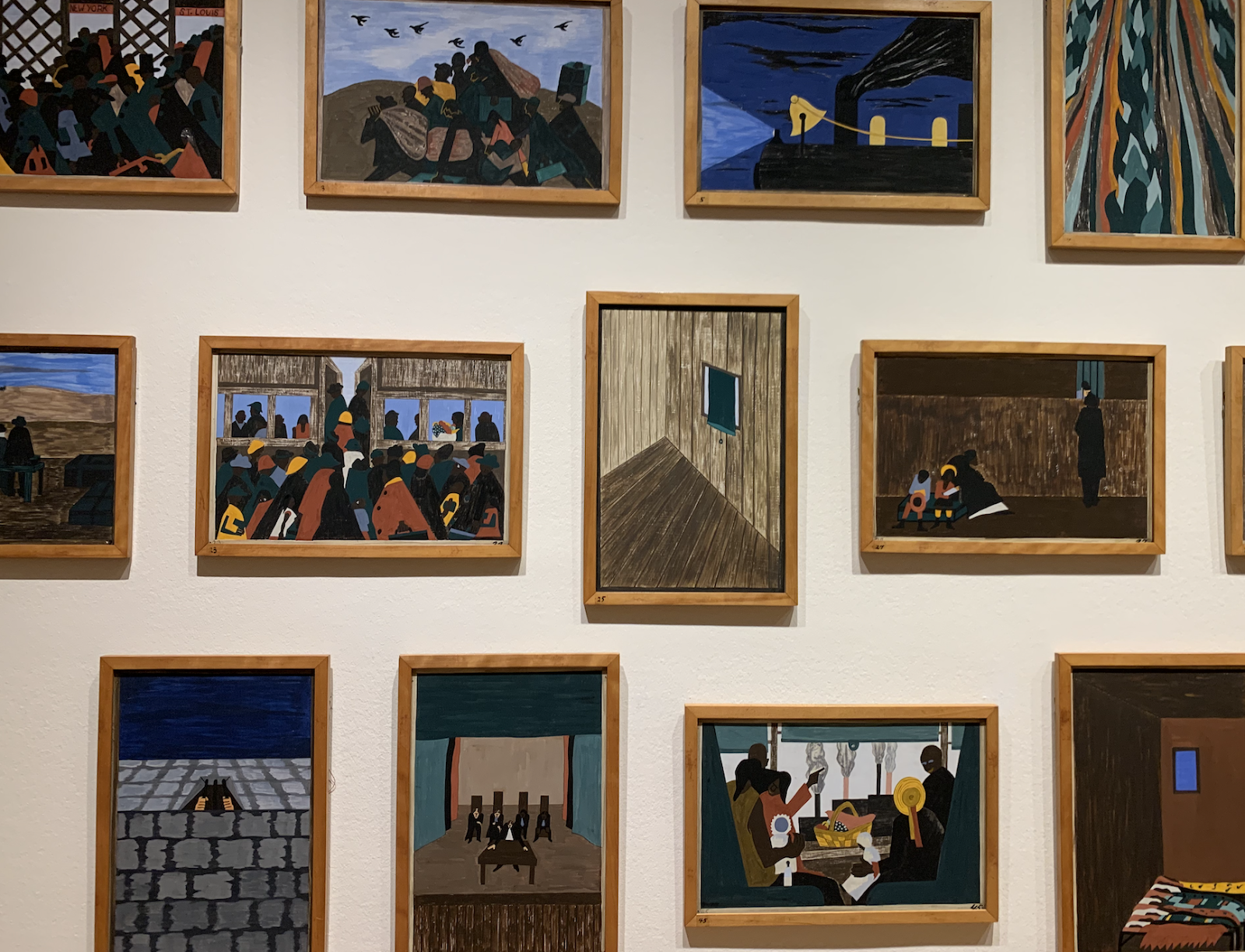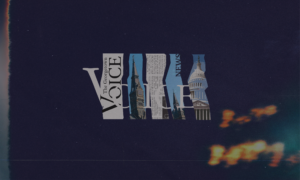In 1945 Richard Wright wrote a poem influenced by his experience of being a part of the Great Migration, the movement of around 6 million African Americans from the rural South to the Urban Northeast. The beautifully written poem ends with the poignant lines, “respond to the warmth of other suns/and, perhaps, to bloom.” It is these lyrical lines that inspired The Phillips Collection’s newest exhibition The Warmth of Other Suns Stories of Global Displacement.
The Warmth of Other Suns presents works from all over the world that focus on an essential topic: migration. This theme is weaved through videos, paintings, sculptures, and photographs that center around different world experiences, perceptions regarding migration, and the current global refugee crisis. These works include Arshile Gorky’s renowned painting “The Artist and His Mother,” the emotional collection of Phillip Lawrence’s paintings The Migration Series, and creatively constructed works like “Double America” by Glenn Ligon.
The exhibition itself takes up a whole building within The Phillips Collection. Walking onto the second floor, the viewer first encounters a room lined with Ellis Island photos. The photos first depict the crowded environment Ellis Island migrants lived in during their travels. Alongside these photos are individual portraits notably portraying the migrants in their native dress. These photographs immediately set a serious tone. In black and white, they fill the viewer with a sense of awe at the migrants’ experience as well as respect for their cultural background. While the migrants at Ellis Island is a familiar story, especially to Americans, it is truly through these photos that the viewer can realize the extremely complex emotional journeys of migrants. Moreover, as the opening piece, the Ellis Island photos contribute to the overall emotional build of the exhibition itself. The collection goes from works representing more individualistic experiences of migration toward works portraying a more general, global perspective on the topic.
Near the Ellis Island photos is one of the exhibit’s most famous works, Arshile Gorky’s “The Artist and His Mother.” The painting simplistically presents Gorky standing beside his mother. The painting’s red tones portrays an urgency of sorts, and the stark, sad faces of Gorky and his mother reflect the loss and separation Gorky felt after his mother died during the Armenian genocide. The painting is truly a highlight of the event as it implores the viewer to relate to a very specific emotion: grief from the loss of a parent.
On the same floor is Zarina Hashmi’s work “Home is a Foreign Place,” which conveys her unique perspective of what a home can be. The work is composed of various woodcut prints that are very straightforward. Yet, when put next to each other, they create a beautiful, quilt-like image. Just looking at the prints will give the viewer the sense that Hashmi has come from an eclectic mix of cultures. Hashmi, a Muslim who grew up in India, used a style common to Japan, reflecting the exhibit’s attempt to showcase global perspectives regarding displacement. By definition, migrants lack a stationary physical home. Yet, conveyed in many of the gallery’s pieces such Hashmi’s, migrants are often able to create a unique cultural home that they can relate to, even if based on a synthesis of different traditional cultures.
More highlights of the exhibit occur on the third floor, which moves the focus of the exhibit to current migration issues. A neon-lit sign with the word America inverted multiple ways greets viewers walking in. The piece, created by artist Glenn Ligon, is called “Double America.” The sign itself is meant to represent both a beacon and a hazard, arguing that America is simply a mirage to those who migrate to it.
Jacob Lawrence’s The Migration Series which narrows in on the experience of being part of the Great Migration reflects the falsehood of the American dream once more. His famous series is extremely appealing to the eye because each piece uses the same basic color scheme. Moreover, the pieces themselves are so simplistic that they almost look abstract at times. Taken as individual pieces, each work demonstrates a singular aspect of the Great Migration, like small food supplies or prejudices in the workforce. Taken as a whole, the series conveys the difficulties, motivations, hopes, and disappointments of migration. It is through the simplicity of each piece that the whole comes together. One cannot help but be a little overwhelmed looking at how all the small moments that make up the migrant’s journey are interconnected and contribute to a powerful, personnel migrational experience.
In one of the final rooms, the observer encounters clothes strewn all over the floor. Surrounding the chaos of clothes is an image of the sea and three works of embroidered maps. The clothes scattered before the viewer are a clear representation of those who died on their migration journey, haunting the room with the souls of those who once wore the clothes. In contrast to the straightforward maps on the wall, the clothes bring an empathetic element to the current global refugee crisis, making it truly the most poignant room of the whole exhibit.
After leaving The Warmth of Other Suns, the viewer is imbued with a humanized perspective of past and current migration issues. Every floor continues to emphasize the complex, largely harmful, physical and psychological effects those affected by the migration continue to experience. Globally, thirty people are forced to flee their homes every minute of every day. Yet that is not quite put into perspective until experiencing this collection. It truly gives those who go to the exhibit a dose of reality that, at any given moment, there are people who have nothing but the possessions they can carry. Perhaps this feeling is best characterized by a statement made in a video at the exhibit: “That I was a burden on my own feet.”
Photo credit Genevieve Domenico





